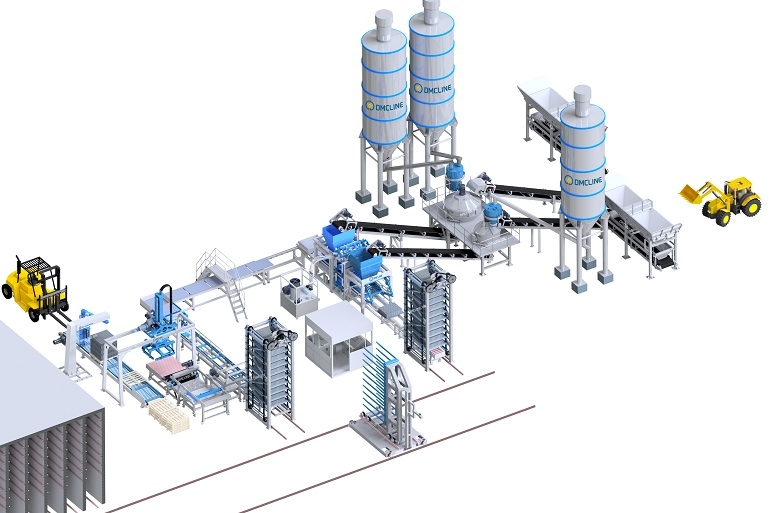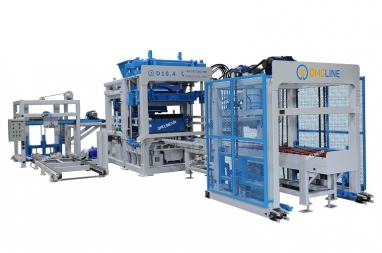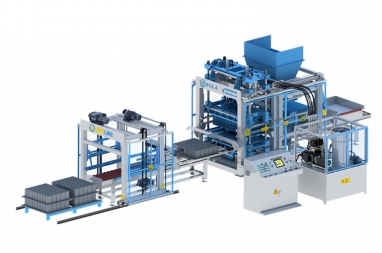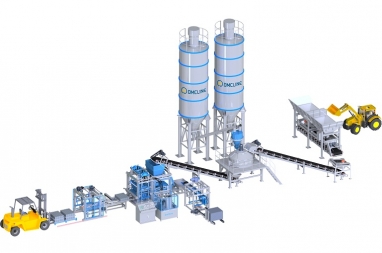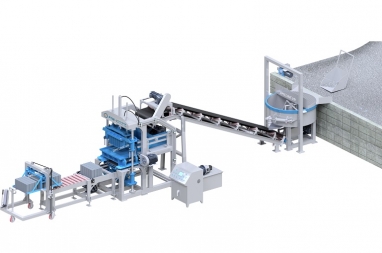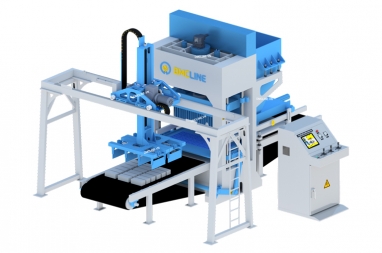D15 Concrete Block Making Machine
The meaning of name D15.4
- D means the name of concrete block making machine with the brandname DMCLINE;
- 15 means the number of blocks per press time with size 400x200x200;
- 4 means the 4th version using servo pressure-vibration technology;
Technical specifications of D15 - G9 block making machine
| Designed capacity | 100 000m3/year (size 400x200x200mm) |
| Cycle time | 15 ÷ 25 s |
| Power | 296.7 Kw |
| Vibration mechanism | Table vibration |
| Pallet | Plastic: 1350x1100x35mm; Steel: 1350x1100x12mm |
| Warranty | 12 months |
| Place of origin | DMC Vietnam |
| Workers | 10 workers/2 shift (include loading & unloading workers) |
| Factory area | 10 305 m2 (include finished products yard) |
The number of workers to operate D15 - G9 concrete block machine
| Factory manager | 1 worker |
| Worker for operating machine | 4 workers |
| Worker for operating dumper | 2 workers |
| Worker for operating forklift | 2 workers |
| Worker for loading wet block | 0 worker |
| Worker for cleaning up | 1 worker |
Factory area of D15 - G9: 10 305m2
| Workshop | 1 224 m2 |
| Area for drying wet blocks | 784 m2 (for 16 hours) |
| Area for containing finished products | 3 835 m2 |
| Area for input materials | 2 520 m2 |
| Area for office and others | 487 m2 |
| Area for interal yards and trees | 1 455 m2 |
Technology description of D15 - G9 concrete block production

(1) Silo: A Special purpose storage contains cement. Besides the steady steel structure, it includes dust filtering system, anti-clogging aeration and safety valve.
(2) Batching machine: Include two or three materials hoppers. After feeding materials fully into hopper, they will be scaled exactly before transfering into machine
(3) Belt conveyor: Transfer materials after scaling to mixer
(4) Screw conveyor: Transfer cement and fly-ash from silo to cement scale
(5) Cement scale: Include a bucket and a scale. Scaled data will be displayed on control center to help workers monitor the production process easily
(6) Mixer: Aggregates (grind stone, sand, thermal slag, ect), water and cement after scaling are mixed together evenly as the setting parameter.
(7) Belt conveyor: Transfer materials after mixing to material deviding machine
(8) Material deviding machine: Store and deliver materials after mixing to block making machine
(9) Pallet feeder: Put pallet into block making machine to bear products and push them to block conveyor
(10) Block making machine: Being designed integratively between pressure, vibration pressure and forced vibration pressure. It creates a strong pressed vibration force to form blocks with high quality and uniformity.
(11) Block conveyor: Clean the surface and transfer block pallet to block stacker
(12) Cooling machine: Cool the hydraulic oil by circulating water pump system
(13) Color feeding machine: Receive the surface material mixture of interlocking block, paver block, ect, then feed color into the mould of block making machine
(14) Belt conveyor: Transfer surface material mixture after mixing to color feeding machine
(15) Pigment mixer: Mix the materials such as cement, sand, color matter, water, ect together to make a surface materials mixture for interlocking block, paver block, ect.
(16) Silo: a special purpose storage contains cement to use for mixing surface color
(17) Batching machine: Include two material hoppers to feed for area of mixing surface color
(18) Belt conveyor: Transfer material after scaling to pigment mixer
(19) Srew conveyor: Being mouted at the bottom of silo at the surface color mixing area.
(20) Cement scale: Include bucket and scale
(21) Elevator (10 storeys and 20 trays): Receive the wet block pallet from block conveyor and stack into 10 storeys
(22) Finger cart (10 storeys and 20 trays): Receive the wet block pallet from block stacker, then transfer to curing chamber, after that, receive the dry block pallet and feed for block stacking system
(23) Movement rails system: A rails system supports block conveyor transfer to the positions such as block stacker, lowerator and curing chamber
(24) Lowerator (10 storeys and 20 trays): Receive the dry block pallet from finger cart (10 storeys and 20 trays) and lower each pallet into block conveyor
(25) Cured block conveyor: Receicve block pallet from lowerator (10 storeys and 20 trays), transfer pallet with block to horizontal block conveyor and pallet without block to pallet turner.
(26) Horizontal block conveyor: Separate and transfer block from cured block conveyor to block conveyor and turned machine.
(27) Block conveyor and turned machine: Gather and turn block horizontally and transfer to pending position for stacking.
(28) Cuber: Pick the block up from the pending position to stack into bale (block bale)
(29) Chain type conveyor: Transfer block bale to pending position for wrappong nylon
(30) Pallet turner: Turn and clean pallet
(31) Pallet gathering machine: Receive pallet from chain type conveyor, then gather at the beginning position.
(32) Nylon wrapping machine: After wrapping nylon, the block bales will be transferred by forklift to the finished product yard.
(33) Curing chamber: Contain block bale for natural cure within 24 hours
(34) Control center: Contain electric cabinet and operating worker
Production process of D15 – G9 concrete block
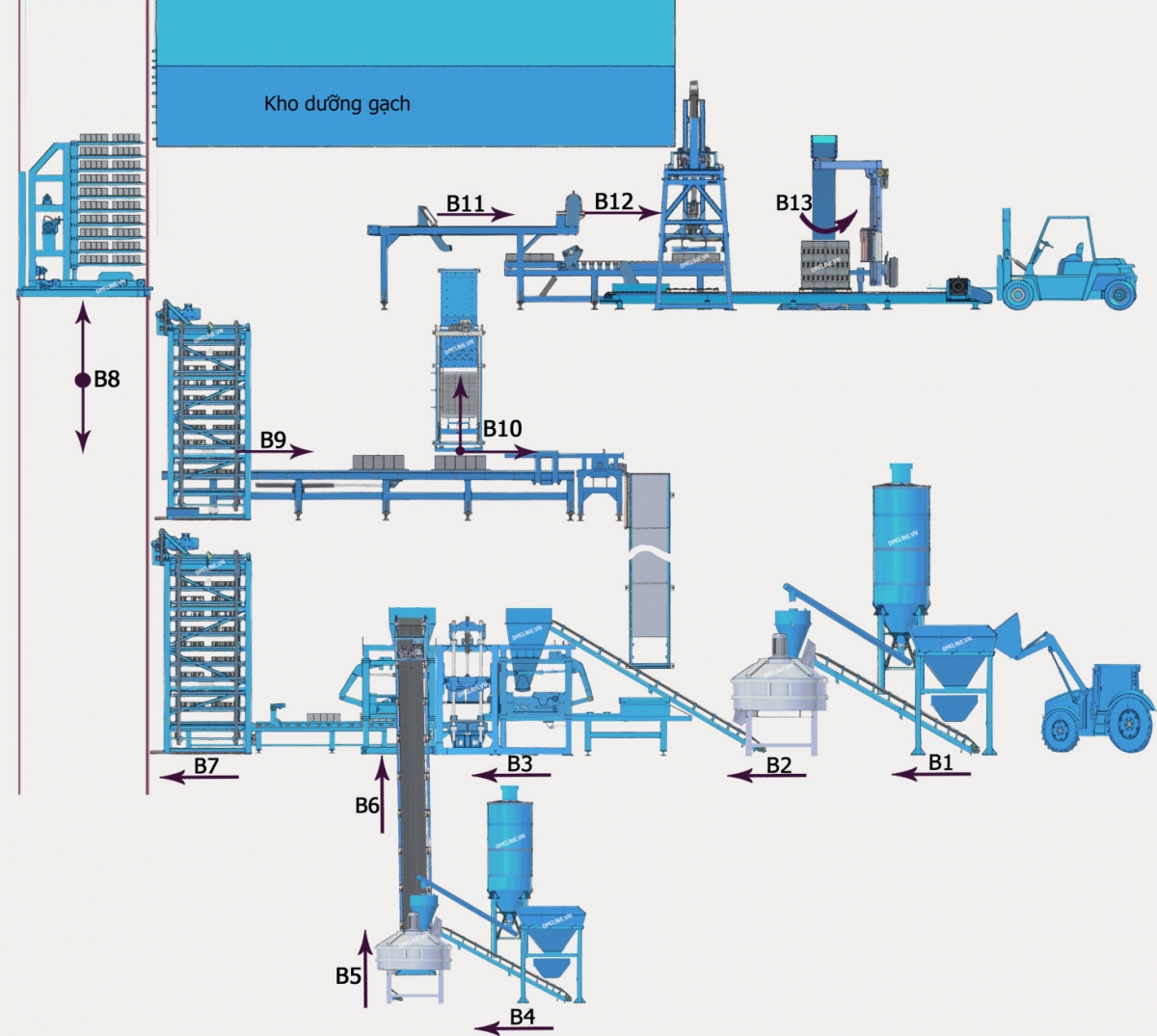
(B1) Step 1: The dumper feeds materials (stone, sand, ash, slag, ect) into hoppers to scale.
(B2) Step 2: The materials after scaling are mixed together with cement and water.
(B3) Step 3: The pressure - vibration machine forms block piece as the mould. In this process, workers must regularly check to adjust timely to limit the error products.
(B4) Step 4: The dumper feeds materials (sand, ect) into hoppers to scale
(B5) Step 5: Mix the materials such as cement, sand, color matter, water, ect together to create the mixture of surface materials for interlocking block, paver block, ect
(B6) Step 6: The materials for surface are discharged to belt conveyor and transfered to pigment feeding machine. Color is fed in the surface of block, then block making machine vibrates and presses the second time
(B7) Step 7: Atfer forming, block stacker rucks block into 10 storeys.
(B8) Step 8: Finger cart transfers blocks to curing chamber from 18 to 24 hours, then transfers to lowerator and stacks into bale.
(B9) Step 9: Lowerator (10 storey and 20 trays) separates each pallet to cured block conveyor
(B10) Step 10: The machine pushes the pallet with block to horizontal block conveyor and pushes the pallet without block to pallet turner at once
(B11) Step 11: The machine gathers and turns block then transfer to stacking pending conveyor
(B12) Step 12: The cuber picks block up from stacking pending position to stack into bale
(B13) Step 13: After stacking, block bale is wrapped by nylon and transferred to finished product yard. After from 15 to 20 days, block can be exported.

Finished block tray
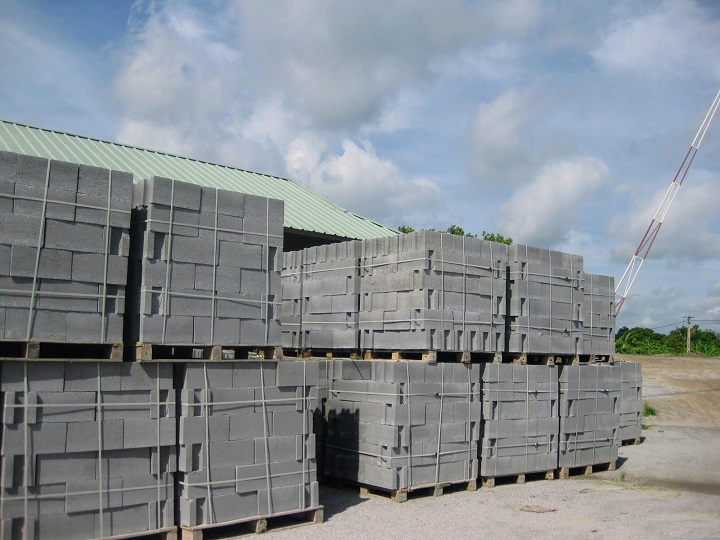
Finished block bale
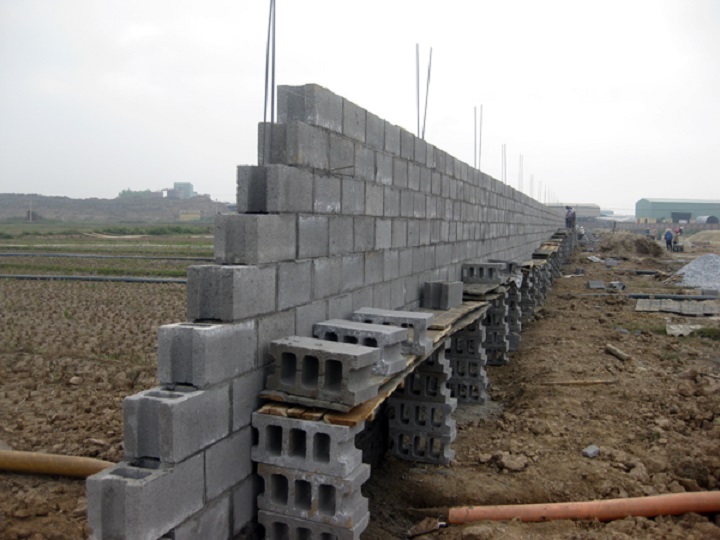
Wall without bonding mortar
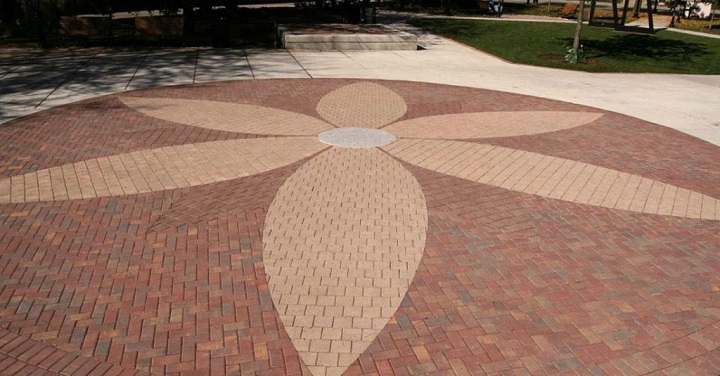
Interlocking paver block
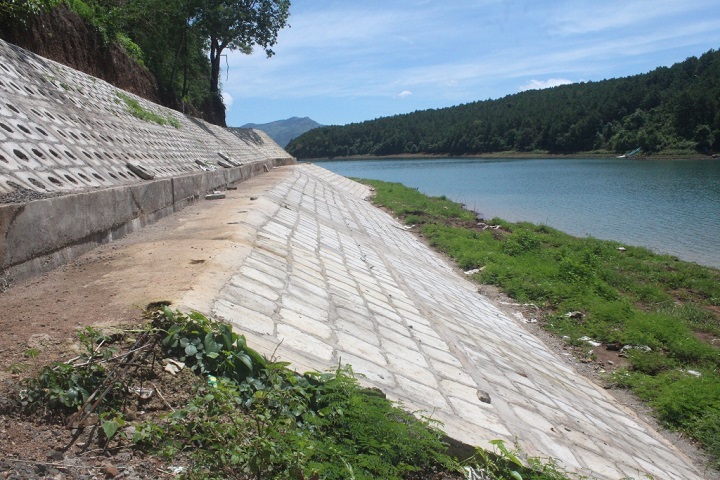
Slope-protect brick

Grass paving block
Related products
Dây chuyền sản xuất khối bê tông DmCline D10 với công suất cao , “1 lần ép được 88 miếng khối rỗng, 1 giờ có thể ép được 7480 miếng khối rỗng”, tự động hóa từ cấp liệu đến xếp chồng , “sử dụng 07 công nhân vận hành”, máy tạo khối với tốc độ cao, bảo hành một (01) năm. Báo giá dây chuyền sản xuất Bê tông khối?
High quality concrete block production line with high pressure, 1 time can press 117 pieces of hollow block, 1 hour can press 9945 pieces of hollow block, Full automation, block making machine with high speed, “using 07 operation workers”, one (1) year warranty
Concrete block making machine, Concrete block casting machine, 42 million standard pieces per year warranty, combining 3 in 1 vibration and press, steadibility operation, “using 07 operation workers”, one (1) year warrantly.
semi-automatic concrete block making machine; the price of block making machine with the capacity of 24 million standard pieces per year, automatic bock making machine, What is the price of block making machine “using 03 operation workers”, one (1) year warranty.
Concrete block making/pressing machine with the capacity of 20 million standard pieces per year, semi-automatic concrete block making/pressing machine. The price of block making/pressing machine, using “03 operation workers”, one (1) year warranty. What is the price of block making/pressing machine?
High quality fly ash brick making machine with high productivity. Manufactured by the leading brand in Vietnam. 01 year warranty. Fly ash bricks machine price?


